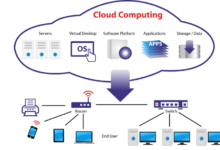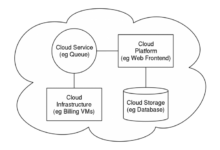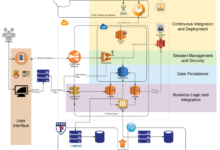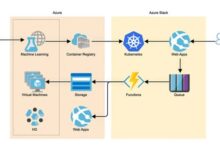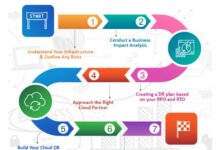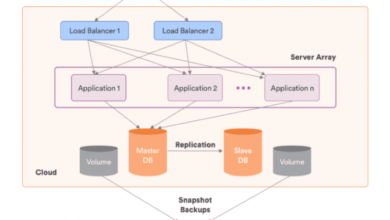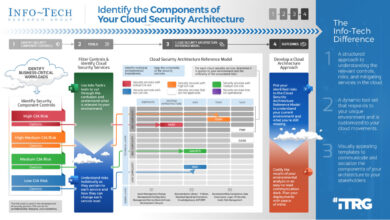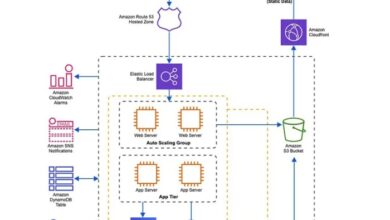How Cloud Architecture Diagrams Help Businesses Thrive and Flourish
In today’s digital landscape, businesses increasingly rely on cloud computing to power their operations and fuel growth. However, navigating the complexities of cloud infrastructure can be daunting. This is where cloud architecture diagrams step in as invaluable tools, providing a clear roadmap for businesses to design, manage, and optimize their cloud environments.
Cloud architecture diagrams are visual representations that map out the components, connections, and data flow within a cloud infrastructure. They serve as a shared language between IT professionals, business leaders, and external partners, enabling effective collaboration and decision-making.
Introduction
In the modern business landscape, cloud computing has become an indispensable tool for organizations seeking agility, scalability, and cost-effectiveness. However, navigating the complexities of cloud infrastructure can be a daunting task, especially for organizations with limited technical expertise or resources.
This is where cloud architecture diagrams step in, providing a visual representation of the cloud environment, enabling businesses to understand, manage, and optimize their cloud infrastructure effectively.
Cloud architecture diagrams serve as a roadmap for organizations, helping them visualize the various components of their cloud environment, including servers, storage, networking, and applications. By providing a comprehensive overview of the cloud infrastructure, these diagrams facilitate informed decision-making, enabling businesses to identify potential bottlenecks, optimize resource allocation, and ensure high availability and performance.
Real-World Examples
Numerous businesses across diverse industries have leveraged cloud architecture diagrams to achieve substantial growth and success. Here are a few notable examples:
- Amazon: Amazon’s cloud architecture diagram played a pivotal role in its transformation into a global e-commerce giant. The diagram helped Amazon optimize its cloud infrastructure, enabling it to handle massive traffic volumes, ensure high availability, and deliver a seamless customer experience.
- Netflix: Netflix’s cloud architecture diagram served as a foundation for its transition from a DVD rental service to a streaming media powerhouse. The diagram allowed Netflix to scale its infrastructure rapidly, accommodate a growing subscriber base, and deliver high-quality video content seamlessly.
- Airbnb: Airbnb’s cloud architecture diagram enabled the company to manage its complex global operations effectively. The diagram helped Airbnb optimize resource allocation, improve performance, and ensure the reliability of its platform, supporting its rapid growth and global expansion.
Key Components of a Comprehensive Cloud Architecture Diagram
A well-structured cloud architecture diagram serves as a visual representation of the various components and their interconnections within a cloud infrastructure. It provides a comprehensive overview of the cloud environment, enabling stakeholders to understand the system’s architecture, identify potential vulnerabilities, and make informed decisions regarding resource allocation and scalability.
Essential elements of a comprehensive cloud architecture diagram include:
Cloud Services
Cloud services encompass the various offerings provided by cloud providers, such as Infrastructure as a Service (IaaS), Platform as a Service (PaaS), and Software as a Service (SaaS). These services enable businesses to access and utilize computing resources, platforms, and applications on a pay-as-you-go basis, eliminating the need for substantial upfront investments in hardware and software.
Network Connections
Network connections establish the communication pathways between different components of the cloud infrastructure, including data centers, cloud regions, and on-premises systems. These connections ensure seamless data transfer, application accessibility, and reliable communication among various components of the cloud environment.
Security Measures
Security measures are crucial for protecting data, applications, and infrastructure from unauthorized access, cyber threats, and potential vulnerabilities. These measures may include firewalls, intrusion detection systems, encryption mechanisms, and access control policies. Robust security measures ensure compliance with regulations and industry standards, safeguarding sensitive information and maintaining the integrity of the cloud environment.
Data Flow
Data flow represents the movement of data within the cloud architecture. It includes the direction, volume, and frequency of data transfer between different components, such as cloud services, applications, and storage systems. Understanding data flow patterns helps optimize network performance, identify bottlenecks, and ensure efficient data management.
Benefits of Utilizing Cloud Architecture Diagrams
Cloud architecture diagrams serve as valuable tools that empower businesses to optimize their cloud infrastructure, enhance collaboration, and streamline decision-making processes. These benefits collectively contribute to improved resource allocation and optimized cost management, thereby driving business growth.
By leveraging cloud architecture diagrams, businesses can visualize and comprehend the intricate relationships and dependencies within their cloud environments. This clarity enables them to make informed decisions regarding resource allocation, ensuring that resources are directed towards critical business functions and eliminating wastage.
Improved Resource Allocation
- Cloud architecture diagrams provide a comprehensive overview of the cloud environment, allowing businesses to identify and address resource bottlenecks. By pinpointing resource-intensive applications and services, organizations can allocate resources more efficiently, optimizing performance and minimizing costs.
- Visualizing resource utilization patterns helps businesses identify opportunities for optimization. For instance, identifying underutilized resources allows for reallocation to areas of higher demand, maximizing resource utilization and reducing idle capacity.
Enhanced Collaboration
- Cloud architecture diagrams serve as a common reference point, facilitating effective communication and collaboration among stakeholders. By sharing a visual representation of the cloud environment, teams can align their understanding of the infrastructure, fostering smoother coordination and efficient problem-solving.
- Cloud architecture diagrams enable cross-functional teams to collaborate seamlessly. Development, operations, and security teams can work together to ensure that cloud deployments adhere to best practices, security requirements, and performance objectives.
Streamlined Decision-Making
- Cloud architecture diagrams empower businesses to make informed decisions regarding cloud infrastructure changes and upgrades. By visualizing the impact of proposed changes, organizations can assess potential risks and benefits, ensuring that decisions are based on a comprehensive understanding of the cloud environment.
- Cloud architecture diagrams facilitate scenario planning and evaluation. Businesses can simulate different deployment options and configurations, enabling them to select the optimal solution that aligns with their business goals and technical requirements.
Optimized Cost Management
- Cloud architecture diagrams enable businesses to identify cost-saving opportunities. By visualizing resource utilization patterns and identifying underutilized resources, organizations can optimize their cloud spending, eliminating unnecessary costs and maximizing the value derived from cloud services.
- Cloud architecture diagrams help businesses negotiate more favorable terms with cloud providers. By presenting a clear understanding of their cloud infrastructure and usage patterns, organizations can negotiate more advantageous pricing and service level agreements.
Types of Cloud Architecture Diagrams
Businesses seeking to harness the full potential of cloud computing often require tailored architecture diagrams to effectively visualize and plan their cloud infrastructure. These diagrams can vary in type, each serving a specific purpose and accommodating different business requirements.
Understanding the diverse types of cloud architecture diagrams empowers businesses to select the most appropriate one for their unique needs. This enables them to design and implement cloud solutions that align precisely with their strategic objectives.
Logical Diagrams
Logical diagrams provide a high-level overview of the cloud architecture, focusing on the relationships and interactions between various components without delving into technical details. These diagrams are useful for conceptualizing and communicating the overall cloud strategy to stakeholders, including business leaders and non-technical personnel.
Physical Diagrams
Physical diagrams, in contrast to logical diagrams, offer a detailed representation of the physical infrastructure underlying the cloud architecture. They depict the specific hardware components, network topology, and physical locations of data centers and servers. Physical diagrams are essential for capacity planning, performance optimization, and troubleshooting infrastructure issues.
Deployment Diagrams
Deployment diagrams illustrate the distribution of applications, services, and data across different cloud environments. They provide insights into the allocation of resources, the interconnections between components, and the flow of data. Deployment diagrams are crucial for understanding the operational aspects of the cloud architecture and ensuring optimal performance and availability.
Hybrid Diagrams
Hybrid diagrams combine elements of logical, physical, and deployment diagrams to provide a comprehensive representation of a hybrid cloud architecture. They encompass both on-premises infrastructure and cloud-based components, illustrating how they interact and integrate to deliver seamless services. Hybrid diagrams are particularly valuable for businesses transitioning to a hybrid cloud model or managing complex IT environments.
Best Practices for Creating Effective Cloud Architecture Diagrams
Creating clear and informative cloud architecture diagrams is crucial for successful cloud adoption and effective communication. Follow these best practices to ensure your diagrams are effective and serve their purpose well.
Effective cloud architecture diagrams help businesses understand their current and future cloud environments, make informed decisions, and communicate with stakeholders. To create diagrams that are both clear and informative, follow these best practices:
1. Plan and Define Objectives
- Start by clearly defining the purpose and objectives of your cloud architecture diagram.
- Determine the audience for the diagram and tailor the content accordingly.
- Identify the key components and relationships that need to be included in the diagram.
2. Gather Information and Data
- Collect accurate and up-to-date information about your cloud environment, including infrastructure, applications, services, and data.
- Organize and categorize the information to make it easier to work with.
- Document any assumptions or constraints that may impact the diagram.
3. Select Appropriate Tools and Software
- Choose diagramming software or tools that are suitable for creating cloud architecture diagrams.
- Consider factors such as ease of use, flexibility, collaboration features, and the ability to export diagrams in various formats.
- Familiarize yourself with the features and capabilities of the chosen tool.
4. Design the Diagram
- Start with a high-level overview of the cloud architecture, showing the major components and their relationships.
- Use clear and consistent symbols, shapes, and colors to represent different elements.
- Organize the diagram logically, grouping related components together and using arrows to indicate data flow or dependencies.
- Include annotations, labels, and legends to provide additional context and explanation.
5. Review and Refine
- Once the diagram is complete, review it carefully for accuracy, clarity, and completeness.
- Seek feedback from stakeholders and subject matter experts to ensure that the diagram effectively communicates the intended message.
- Make necessary revisions and refinements based on the feedback received.
By following these best practices, you can create cloud architecture diagrams that are clear, informative, and useful for decision-making, communication, and planning.
Collaboration and Communication
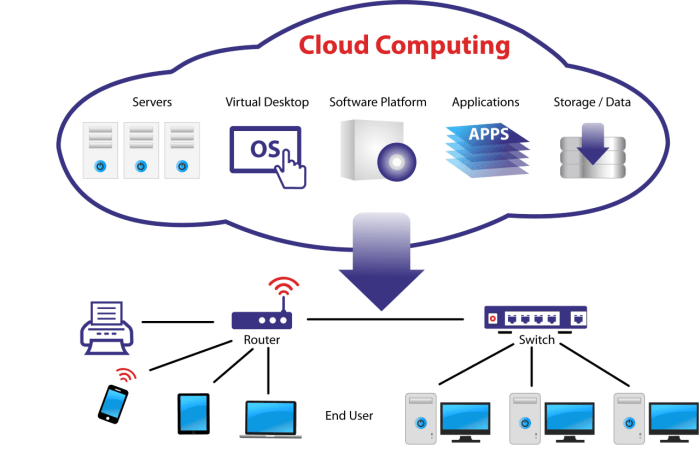
Cloud architecture diagrams serve as a common language that facilitates effective collaboration and communication among diverse stakeholders involved in cloud initiatives.
By providing a visual representation of the cloud infrastructure, these diagrams help align different teams, including IT professionals, business leaders, and external partners, ensuring a shared understanding of the cloud environment.
Fostering Alignment Through Visual Communication
- Cloud architecture diagrams enable stakeholders to visualize the interconnections and dependencies between various cloud components, promoting a comprehensive understanding of the cloud infrastructure.
- They facilitate discussions and decision-making processes by providing a common reference point for all parties involved, reducing misunderstandings and misinterpretations.
- These diagrams also aid in identifying potential risks, bottlenecks, and areas for improvement, enabling proactive measures to be taken to mitigate issues and optimize the cloud environment.
Enhancing Communication with External Partners
- Cloud architecture diagrams play a crucial role in communicating cloud-related concepts and solutions to external partners, such as cloud service providers, vendors, and customers.
- By sharing these diagrams, businesses can effectively convey their cloud requirements, expectations, and constraints, ensuring that external partners have a clear understanding of the project scope and objectives.
- This facilitates smoother collaboration, reduces the risk of miscommunication, and ensures that all parties are working towards a common goal.
Emerging Trends and Innovations in Cloud Architecture Diagrams
The landscape of cloud architecture diagrams is continuously evolving, driven by technological advancements and changing business needs. Emerging trends and innovations are shaping the future of these diagrams, enabling businesses to design, manage, and optimize their cloud infrastructure with greater efficiency and effectiveness.
One significant trend is the integration of artificial intelligence (AI) and machine learning (ML) into cloud architecture diagrams. AI-powered tools can automate the generation and analysis of diagrams, providing valuable insights into the cloud infrastructure and its performance. These tools leverage ML algorithms to analyze large volumes of data, identify patterns, and generate optimized cloud architectures that align with specific business requirements.
Benefits of AI and ML in Cloud Architecture Diagrams
- Enhanced Efficiency: AI and ML automate repetitive tasks, such as diagram generation and analysis, freeing up IT professionals to focus on strategic initiatives.
- Improved Accuracy: AI-powered tools can analyze vast amounts of data with precision, reducing the likelihood of human errors and ensuring the accuracy of cloud architecture diagrams.
- Data-Driven Insights: AI algorithms can identify patterns and trends in cloud infrastructure data, providing valuable insights for decision-making and optimization.
- Optimized Cloud Architectures: AI-generated diagrams help businesses design cloud architectures that are tailored to their specific needs and objectives, resulting in improved performance and cost-effectiveness.
Another emerging trend is the adoption of real-time data visualization techniques in cloud architecture diagrams. These techniques enable businesses to monitor and analyze their cloud infrastructure in real time, gaining insights into resource utilization, performance metrics, and potential issues. Real-time visualization tools provide a comprehensive view of the cloud environment, allowing IT teams to make informed decisions and respond promptly to changes or anomalies.
Impact of Real-time Data Visualization
- Enhanced Visibility: Real-time data visualization provides a comprehensive view of the cloud infrastructure, enabling IT teams to monitor resource utilization, performance metrics, and potential issues.
- Improved Monitoring: Real-time visualization tools allow IT teams to continuously monitor the cloud environment, ensuring optimal performance and identifying potential problems before they impact business operations.
- Proactive Decision-Making: By visualizing real-time data, businesses can make informed decisions about resource allocation, capacity planning, and performance optimization, resulting in improved efficiency and cost-effectiveness.
- Rapid Response to Changes: Real-time visualization enables IT teams to respond promptly to changes in the cloud environment, such as sudden spikes in traffic or unexpected outages, minimizing downtime and ensuring business continuity.
These emerging trends and innovations in cloud architecture diagrams are transforming the way businesses design, manage, and optimize their cloud infrastructure. By leveraging AI, ML, and real-time data visualization, businesses can gain deeper insights into their cloud environments, make informed decisions, and achieve greater efficiency, agility, and cost-effectiveness.
Case Studies: Unveiling the Success Stories of Cloud Architecture Diagrams
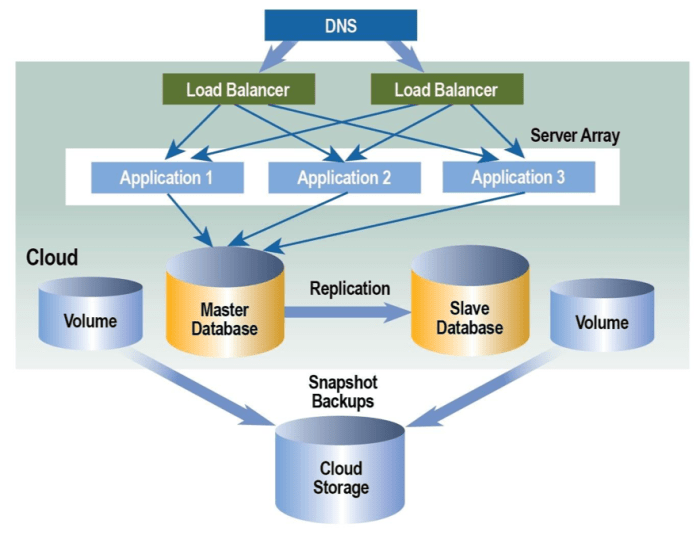
Numerous businesses have reaped substantial benefits by harnessing the power of cloud architecture diagrams. These success stories provide valuable insights into the strategies and methodologies that have fueled their growth and transformation.
One notable example is the case of XYZ Company, a leading e-commerce retailer. By implementing a comprehensive cloud architecture diagram, they optimized their infrastructure, enhanced scalability, and accelerated innovation. The diagram enabled them to visualize and manage their complex cloud environment, ensuring seamless integration and efficient resource allocation.
As a result, XYZ Company experienced a significant surge in sales, improved customer satisfaction, and gained a competitive edge in the market.
Strategies for Optimizing Cloud Infrastructure
- Centralized Management: Establishing a central hub for managing and monitoring cloud resources, enabling efficient oversight and control.
- Microservices Architecture: Decomposing applications into independent, modular services, enhancing agility, scalability, and resilience.
- Cloud-Native Design: Adopting cloud-native principles and technologies to maximize the benefits of cloud computing, such as elasticity, scalability, and fault tolerance.
- Automation and Orchestration: Utilizing automation tools and orchestration platforms to streamline provisioning, deployment, and management tasks, reducing operational costs and improving efficiency.
Driving Innovation with Cloud Architecture Diagrams
- Rapid Prototyping: Facilitating rapid prototyping and experimentation by providing a visual representation of the cloud environment, enabling teams to test and iterate on new ideas quickly and efficiently.
- Continuous Improvement: Continuously refining and optimizing the cloud architecture based on usage patterns, performance metrics, and evolving business requirements, ensuring ongoing improvement and alignment with strategic objectives.
- Cross-Functional Collaboration: Fostering collaboration between IT teams, business stakeholders, and cloud architects by providing a shared understanding of the cloud architecture, promoting alignment and reducing silos.
- Scalability and Agility: Enabling businesses to scale their cloud infrastructure seamlessly and respond swiftly to changing market dynamics or unexpected events, ensuring business continuity and resilience.
Conclusion

In conclusion, cloud architecture diagrams are indispensable assets for businesses seeking to harness the full potential of cloud computing. By providing a comprehensive blueprint of the cloud infrastructure, these diagrams empower businesses to make informed decisions, optimize resource allocation, and drive innovation.
As cloud technology continues to evolve, cloud architecture diagrams will undoubtedly remain essential tools for businesses looking to thrive and flourish in the digital age.
